|
This site is being used
with the kind permission of James Burton.
Updated information available at:
 http://www.teachers.ash.org.au/teachereduc/
http://www.teachers.ash.org.au/teachereduc/
Taxonomy: A taxonomy is a way of classifying
things. Bloom’s taxonomy is one man’s way of classifying educational
objectives. As you read, you will see that Bloom has classified these
objectives into three domains:
Cognitive (thinking skills)
- Affective (values and emotions)
- Psychomotor (movement skills)
Within each domain, he lists different ‘levels’
of objectives. The article may give you the impression that one
level is more advanced than another, and that learners cannot achieve
the higher level is they have not achieved the ‘lower’ levels. This
is not the case! This system of levels is useful as a taxonomy.
However, real people in real situations do not fit neatly into levels
of categorization. For example, although KNOWLEDGE is the first
level, certain knowledge is very difficult. SYNTHESIS (creating
something new) can be very difficult when working with ideas and
theories, but quite simple when doing something practical, for example,
putting together a healthy menu using information about food groups.
As you read these categorizations, use the information
to guide your thinking about assessment, and the different things
that you can assess.
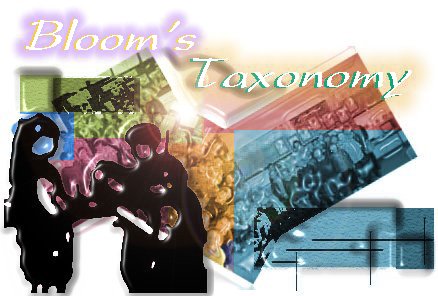
Benjamin Bloom
is recognised as the
the leader in the pursuit of defining educational objectives early
this century. Developing a classification system (a taxonomy)
of educational objectives, Bloom divided his findings into three
domains;
Bloom
listed six basic objectives within the COGNITIVE
domain:1
-
Knowledge
- remembering or recognising something
previously encountered without necessarily understanding, using,
or changing it.
-
Comprehension
- understanding the material being communicated
without necessarily relating it to anything else.
-
Application
- using general concept
to solve a particular problem.
-
Analysis
- breaking something down into parts.
-
Synthesis
- creating something new by combining
different ideas.
-
Evaluation
- judging the value of materials or methods
as they might be applied in a particular situation.
Bloom listed five basic
objectives in the AFFECTIVE domain:
-
Receiving
- being aware of or attending to something
in the environment.
-
Responding
- showing some new behaviour as a result
of experience.
-
Valuing
- showing some definite involvement or
commitment.
-
Organisation
- integrating a new value into one's
general set of values, giving it some ranking among one's general
priorities.
-
Characterisation
by value - acting consistently
with the new value.
Bloom listed six basic
objectives in the PSYCHOMOTOR domain:
-
Reflex movements
- actions that occur
involuntarily in response to some stimulus.
-
Basic fundamental
movements - innate movement
patterns formed from a combination of reflex movements.
-
Perceptual abilities
- translation of stimuli received through
the senses into appropriate movements.
-
Physical abilities
- basic movements and abilities that
are essential to the development of more highly skilled movements.
-
Skilled movements
- more complex movements requiring a
certain degree of efficiency.
-
Non-discursive
movements - ability to
communicate through body movement.
The above information is taken
solely from
Woolfolk, A.E. Educational Psychology
Fourth Edition
(New Jersey, USA: Prentice Hall, 1990)
The following is an
example of how Bloom's Taxonomy may be implemented into a working
curriculum unit - (in this instance a"Science" unit)
Taken from Joseph, J. and Brown, K Authentic Assessment Workshop
1998
Theme - Ecology
systems (Ecosystems)
Convergent processes
Knowledge
- define, identify, list, locate, recall
| Simple
|
What
is an ecosystem? |
| Extended
|
Define
an ecosystem and list the varieties that are found in South
Africa. |
Comprehension
- compare, summarise, explain, convert
| Simple
|
List
the different parts of the ecosystem and explain what they
do. |
| Extended
|
Compare
a marine ecosystem with one from another area of our state.
|
Application
- apply, calculate, practice,
demonstrate
| Simple
|
using
a diagram, show how the water cycle operates in an ecosystem. |
| Extended
|
Demonstrate
what happens when humans interfere with the water cycle.
|
Divergent processes
Analysis
- analyse, contrast, deduce,
differentiate, distinguish, infer
| Simple
|
Contrast
the natural water cycle with that used by our community
|
| Extended
|
Examine
an ecosystem that has been damaged by human interference.
How could the problems have been avoided? |
Synthesis
- compose, create, design, formulate, produce, rearrange
| Simple
|
Identify
an unspoilt ecosystem and design a way of preserving it.
|
| Extended
|
How
would preserving our local ecosystems enhance our environment?
|
Evaluation
- appraise, assess, critique,
judge, support
| Simple
|
Is it reasonable that people pollute
our waterways? Defend your answer. |
|
Extended
|
Assess the impact of pollution in our
local waterways. |
Relating
Bloom's taxonomy to special needs
-
Using the six levels
of Bloom's taxonomy to plan questions and activities provides
the scope for student negotiation and the opportunity to differentiate
the curriculum for some students in accordance with their interests,
abilities and specific learning needs.
Applying Bloom's taxonomy is a WHOLE class exercise and is inclusive
of both mainstream and special need children.
Teachers choosing to use the taxonomy in this way may structure
learning experiences so that :-
All students work through the knowledge and comprehension stage,
then select one activity from each of the other levels.
-
All students work through
the knowledge and comprehension stage and then select activities
from any other levels.
-
Some work through the
knowledge and comprehension stage and others work at higher
levels. This is particularly relevant for gifted and talented
children. All students work from any level - some activities
are tagged as essential - some as optional.
-
Select a thinking process
as a focus - e.g. Analysis (where instruction is being provided
in that process) Some work through knowledge and comprehension
stage, then write down their own activity at their own preferred
level. Students write their own activity/questions from the
taxonomy.
-
Engaging the students
in this activity serves as a useful lead-in to the negotiated
student project to follow.
Teaching
using Bloom's taxonomy
| 
|
1.Knowledge
(finding out)
a. Use: records, films, videos, models, events, media,
diagrams, books...
b. observed behaviour: ask match, discover, locate,
observe, listen.
|
|
|
| 2.
Comprehension (understanding)
a. Use: trends, consequences, tables, cartoons....
b. observed behaviour: chart, associate, contrast,
interpret, compare.
|
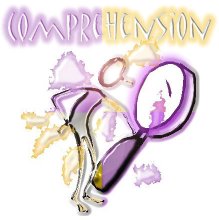
|
|
| 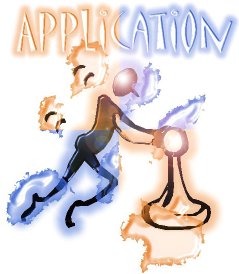
|
3.
Application (making use of the knowledge)
a. use: collection, diary, photographs, sculpture,
stichery, illustration.
b. observed behaviour: list, construct, teach, paint,
manipulate, report.
|
|
| 4.
Analysis questions (taking apart the known)
a. use: graph, survey, diagram, chart, questionnaire,
report....
b. observed behaviour: classify, categorise, dissect,
advertise, survey.
|
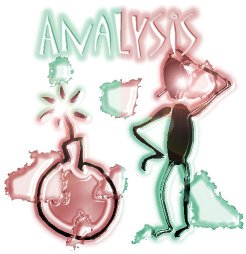
|
|
| 
|
5.
Synthesis (putting things together in another way)
a. Use: article, radio show, video, puppet show, inventions,
poetry, short story...
b. observed behaviour: combine, invent, compose, hypothesis,
create, produce, write.
|
|
| 6.
Evaluation (judging outcomes)
a. Use: letters, group with discussion panel, court
trial, survey, self-evaluation, value, allusions...
b. observed behaviour: judge, debate, evaluating,
editorialise, recommend |
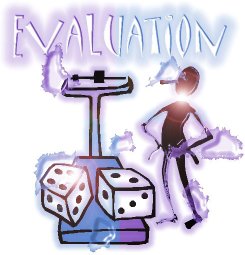
|
|
However, since 1998/99, Bloom's taxonomy has
been officially revised and now we have..
-
The new-look taxonomy,
although very similar, also has some very distinctive changes.
Look at the table below and you will see that most of the definitions
have changed from nouns to verbs, and furthermore, they have been
usurped by more user-friendly terms which can be understood by not
only teachers, but indeed, students as well.
|
Original
|
Revised |
| Knowledge
|
Remember
Recalling the information |
| Comprehension
|
Understand
Explain the ideas and/or concepts |
| Application
|
Apply
Using the newly acquired knowledge
in another familiar situation |
| Analysis
|
Analyse
Comparing and differentiating between constituent parts.
|
| Evaluation
|
Evaluate
Justifying a decision or course
of action |
| Synthesis
|
Create
Generating new new ways of
creating products, ideas or ways of viewing things
|
Note that in addition
to the actual title changes, there is also a shift in the Taxonomy
order, with Synthesis
(replaced with
Create) now becoming
the last component of the Taxonomy.
Why?
Because it is now suggested that it is more appropriate to
Evaluate first, and
then, based upon that evaluation, go the next step and
create
new ideas.
(This new information is adapted
from an article by M. Pohl - 1999)
The
Revised Bloom in practice
Below is an example of how Bloom's taxonomy,
in it's revised format, can be used in the classroom.
I will actually be using this myself during my final practicum
and each section of Bloom's taxonomy will be listed on a separate
poster, displayed in the classroom, that will detail the two learning
foci, namely - Food Advertising and Nutrition
This is part of an eight-week unit in the key learning of the
Arts, that will focus mainly on the Media influence on our eating
and dietary habits.
Students will be choosing activities from the posters as part
of a point system they need to fulfil in this unit.
The low-order
thinking tasks, (that is, Remember,
Understand, and Apply)
will earn 1, 2 and 3 points respectively, while the high-order
thinking tasks will earn 5 for Analyse
and Evaluate
and 6 for
Create.
| |
|
Nutrition
|
| Remember
(Factual answers, recall and recognition)
|
List
10 advertisements that use women's bodies to sell their
food products.
Describe what the advertisers use in
the Hungry Jacks advertisement to sell their products.
Name 10 food advertisements that make junk food look
like it is healthy and good food.
|
Name
the food groups and at least two items of food in each
group
List 12 items that would go in the Bread
group.
Make an acrostic poem about healthy food
|
| Understand
(Translating, interpreting, showing understanding)
|
Explain
why advertisements use music to sell their food products
Outline in your own words how the Leggo's Tomato Paste
advertisement sells their product.
What was the main idea behind the Magnum ice-cream advertisement?
|
Cut
out ten healthy items from food packages or magazines
and paste them under a heading of healthy foods in your
Media book
Write a simple menu for breakfast, lunch
or dinner using the food guide chart
Make a healthy food colouring book suitable for 5 year
old children
|
| Apply
(Using
information gained in different, familiar situations)
|
Which
factors would you change if you had to redo the Campbell's
soup advertisement?
Construct a script for Uncle Toby's
Muesli Bars using a completely different theme.
What 6 questions would you ask if you had to interview
the advertisers of Milo about their product? The questions
need to find out information for your school and whether
or not the product is suitable for the canteen.
|
Find
some photos which would best describe how you feel because
of what you eat.
Write a one page example of how you
would teach about the new food guide. Include your resources.
What would you ask shoppers in a supermarket if you were
doing a survey of what food they eat? (10 questions)
|
| Analyse
(Break
into parts to examine more closely)
|
Compare
two dog food commercials. What is the difference between
them and how do they both sell their products?
Write a new commercial for Mars Bar
that tells only the truth but will still sell them effectively.
Design a questionnaire about coffee
or tea that you can ask of ten people for a report to
give to your advertiser so that they can then decide how
to sell their product.
|
Design
a questionnaire that would gather enough information to
know how to stock the canteen with a wide variety of healthy
food.
Write a biography about an important
person in the food industry.
Prepare a report about what the
people in this class eat for breakfast
|
| Evaluate
(Judge, use criteria, rank and substantiate)
|
Do
you think it is a good or bad thing that advertising uses
women's bodies to sell products? Why?
How would you handle it if you had made the Magnum ice-cream
advertisement and you received many complaints from the
public?
Write a letter to Hungry Jacks explaining why you think
their advertising is false and misleading.
|
Make
a booklet about 10 important eating habits that would
be suitable for the whole school to follow in order to
eat correctly.
Conduct a debate with two teams of 3
in each team about why advertising is wrong to use women's
bodies to sell its products.
Write a letter to Sanitarium asking if they would be
able to help you with some research into how they make
Weetbix, how many they sell and one other fact.
|
| Create
(Combining information to new situations to create new
products, ideas, etc.)
|
Create
a new food product, Give it a name and detail how you
will advertise it.
Design a 30 second radio advertisement
about a new food product you have made.
Construct a poster that will advertise
your new food product in an exciting and irresistible
way.
|
Design
a healthy menu that you think most people would enjoy
using the healthy eating guide.
Create a song and dance to sell bananas.
Design a canteen of the future that will only sell /serve
healthy foods. What sort of signs and logos would it use?
|
|







